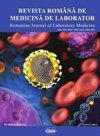Normality assessment, few paradigms and use cases
IF 0.5
4区 医学
Q4 MEDICINE, RESEARCH & EXPERIMENTAL
引用次数: 8
Abstract
Abstract Background: The importance of applying the normality tests is underlined by the way of continuing the statistical protocol for numerical data within inferential statistics, respectively by the parametric or non-parametric tests that we will apply further on. Methods: To check the calculation mode, we used sets of random values and we performed the normality assessment using statistical calculation programs. We took non-Gaussian data (n = 30, n = 50, n = 100, n = 500) and Gaussian data (n = 30, n = 50, n = 100, n = 500) for which we checked the normality of the data. Data chosen for this study were most representative for each batch (n). Results: The application of normality tests to the data under study confirms that the data are non-Gaussian for the first data set. For the Gaussian data sample, the verification of normality is confirmed by the results. Conclusion: For data up to 50 subjects, it is recommended to apply the Shapiro-Wilk test, but also to apply graphical methods to confirm the accuracy of the result. If the data samples have more than 50 values, the D’Agostino & Pearson omnibus normality test should be applied and if the statistical program does not contain this test, the Shapiro-Wilk test can be applied (in the case of SPSS). Graphical methods, although they require some experience, are useful for identifying the normality of distributions with a small number of data.常态性评估,少量范例和用例
摘要背景:应用正态性检验的重要性是通过在推论统计中继续对数值数据的统计协议的方式来强调的,分别通过我们将进一步应用的参数检验或非参数检验。方法:为检验计算方式,采用随机值组,采用统计计算程序进行正态性评价。我们采用非高斯数据(n = 30, n = 50, n = 100, n = 500)和高斯数据(n = 30, n = 50, n = 100, n = 500),我们检查了数据的正态性。本研究选择的数据在每一批(n)中最具代表性。结果:对研究数据进行正态性检验,证实了第一个数据集的数据是非高斯的。对于高斯数据样本,结果证实了正态性的验证。结论:对于不超过50名受试者的数据,建议采用Shapiro-Wilk检验,但也可以采用图形方法来确认结果的准确性。如果数据样本的值大于50,则应采用D 'Agostino & Pearson综合正态性检验,如果统计程序不包含此检验,则可以采用Shapiro-Wilk检验(以SPSS为例)。图形化方法虽然需要一些经验,但对于用少量数据识别分布的正态性是有用的。
本文章由计算机程序翻译,如有差异,请以英文原文为准。
求助全文
约1分钟内获得全文
求助全文
来源期刊

Revista Romana De Medicina De Laborator
MEDICINE, RESEARCH & EXPERIMENTAL-
CiteScore
0.31
自引率
20.00%
发文量
43
审稿时长
>12 weeks
期刊介绍:
The aim of the journal is to publish new information that would lead to a better understanding of biological mechanisms of production of human diseases, their prevention and diagnosis as early as possible and to monitor therapy and the development of the health of patients
 求助内容:
求助内容: 应助结果提醒方式:
应助结果提醒方式:


